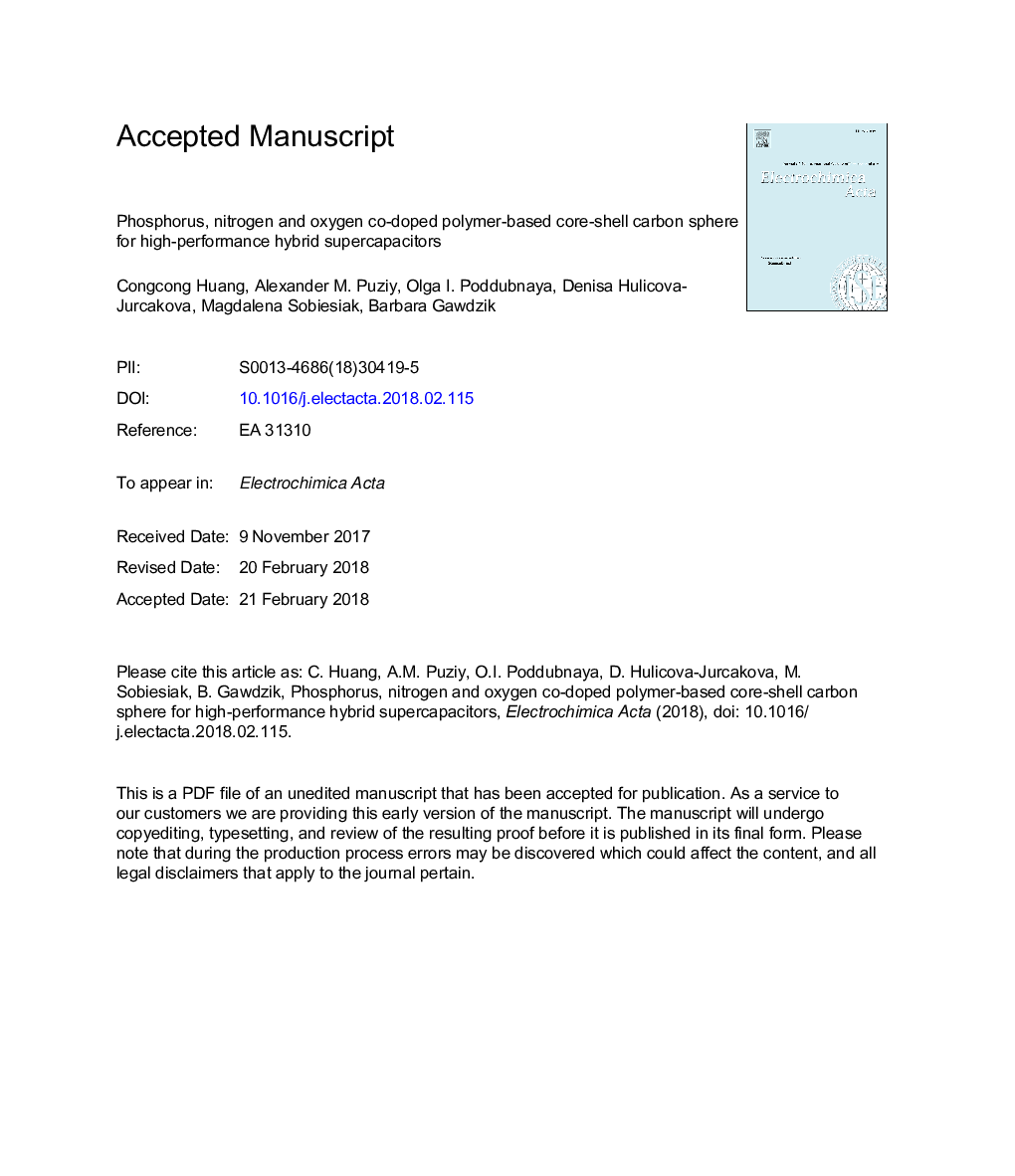| Article ID | Journal | Published Year | Pages | File Type |
|---|---|---|---|---|
| 6603458 | Electrochimica Acta | 2018 | 26 Pages |
Abstract
Co-doping heteroatoms of the carbon lattice has been proven as an efficient strategy that can improve the capacitive performance, due to the synergetic effect of several dopants. Herein, a series of phosphorus, nitrogen and oxygen, co-doped polymer-based carbon spheres were prepared by the suspension polymerization method and chemical activation with phosphoric acid at different temperatures. The presence of heteroatoms was confirmed by X-ray photoelectron spectroscopy and elemental analysis. The structure of the carbons was characterized by scanning electron microscopy, Raman spectroscopy and nitrogen adsorption. Carbon obtained at 800â¯Â°C with a P, N and O doping level of 11.17â¯at%, 2.79â¯at% and 11.77â¯at% respectively, shows a capacitance of 157â¯Fâ¯gâ1â¯at the current density of 0.05â¯Aâ¯gâ1. Moreover, the electrode can survive at a wide potential window of 1.5â¯V with only 15% decrease in capacity after 10000 cycles at a current density of 5â¯Aâ¯gâ1, providing a high energy density of 10â¯Wh kgâ1 and a high power density of 750â¯Wâ¯kgâ1. For the outstanding features, it is expected that the phosphorus, nitrogen and oxygen co-doped carbons will be a very suitable material not only for supercapacitors, but also for lithium batteries and oxygen reduction reaction. In addition, the co-doping method described here might be extended to the preparation of other kinds of porous carbon materials.
Related Topics
Physical Sciences and Engineering
Chemical Engineering
Chemical Engineering (General)
Authors
Congcong Huang, Alexander M. Puziy, Olga I. Poddubnaya, Denisa Hulicova-Jurcakova, Magdalena Sobiesiak, Barbara Gawdzik,
